
Articles (2288)

Remnant Rome Report (3)
The Remnent Newspaper traveled to Rome for coverage of the Conclave.
View items...
Tradition Remembered (3)
The Remnant Will Never Forget
The Remnant devotes this section of our exclusively to testimonies by those who lived through the revolution of the Second Vatican Council.
This page is reserved for those who saw what happened, or heard what happened from those who did, and who truly understand how Catholic families were blown apart. Visitors who have personal reflections, or memories of traditionalists pioneers, or reminicences of the revolution are encouraged to tell their stories and share their pictures here. . . so that we will never forget.
View items...

Vatican Sex Abuse Summit in Rome (0)
RTV Covers Vatican Sex Abuse Summit in Rome
Remnant TV was in Rome this past week covering the Vatican’s clerical sexual abuse summit on the “protection of minors”. It seemed a dismal assignment, to be sure, but the reason it was necessary for The Remnant to be in the Eternal City was so we could throw in with our traditional Catholic allies in Rome who’d organized an act of formal resistance to the Vatican sham summit.
Going in, we all knew that the ultimate goal of the summit was to establish child abuse—not rampant homosexuality in the priesthood—as the main cause of a crisis in the Catholic Church which now rivals that of the Protestant Revolt. (Remnant TV coverage of this event as well as the Vatican summit itself, can be found on The Remnant’s YouTube channel, and for your convenience is laid out below:
View items...
Remnant Cartoons (92)
Have you subscribed to The Remnant’s print edition yet? We come out every two weeks, and each issue includes the very latest Remnant Cartoon!
SUBSCRIBE : https://remnantnewspaper.com/web/index.php/subscribe-today
View items...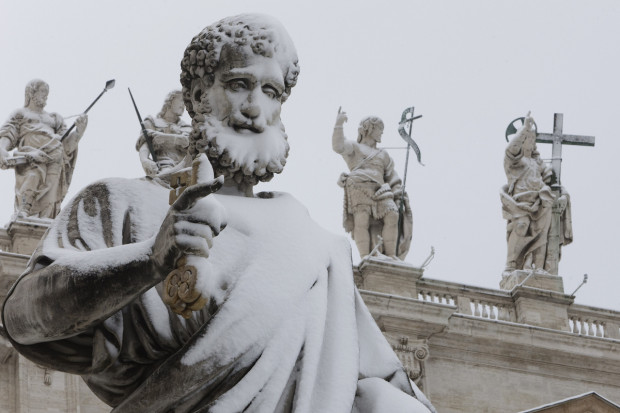 We all know that during the second half of the John Paul II pontificate a great number of conservative Catholic laity took seriously the call to the “New Evangelization” and started working for the Church. It’s a common story in dioceses and the various offices of national conferences bishops around the world. A great many of these are what we call “Generation X” people who were raised and lived through the post-conciliar period, watching as their parents’ generation of priests and bishops systematically tore down the edifice of the Church – sometimes literally in bricks and stones, but as often in the form of the terrible destruction of our patrimony of Catholic social and moral culture.
We all know that during the second half of the John Paul II pontificate a great number of conservative Catholic laity took seriously the call to the “New Evangelization” and started working for the Church. It’s a common story in dioceses and the various offices of national conferences bishops around the world. A great many of these are what we call “Generation X” people who were raised and lived through the post-conciliar period, watching as their parents’ generation of priests and bishops systematically tore down the edifice of the Church – sometimes literally in bricks and stones, but as often in the form of the terrible destruction of our patrimony of Catholic social and moral culture.
When Springtime Turns to Darkest Winter: A Layman's Guide to the Franciscan Pontificate Featured
Written by Hilary White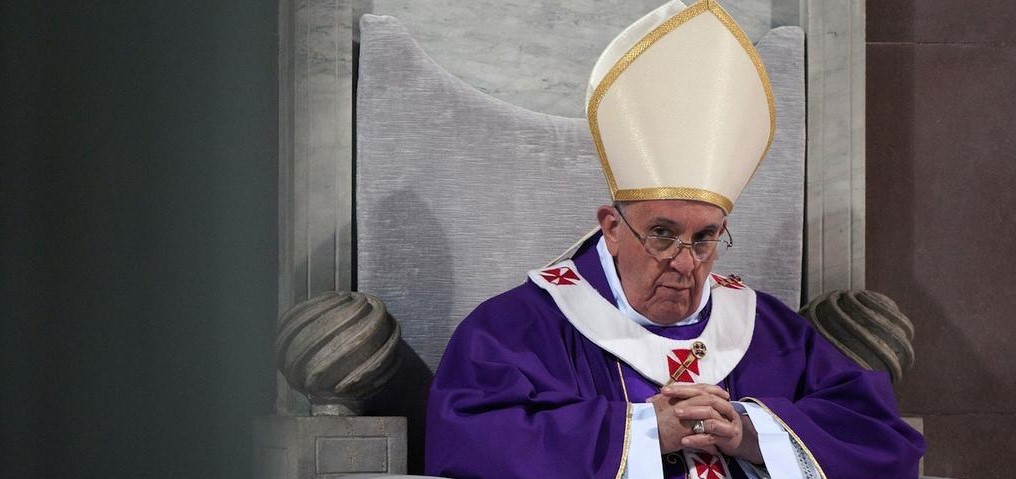
Pope Francis has said that the Lord's Prayer should be changed, arguing that the translation used in many parts of the world, including the Italian and English versions, go against the teachings of the Church and Bible.
In the centuries-old recited prayer, followers of the Christian Faith call on God to "lead us not into temptation, but deliver us from evil."
Speaking to Italian broadcasters on December 7, Francis argued this was incorrect, saying, "It is not a good translation because it speaks of a God who induces temptation."
To think that the Messiah's instruction to mankind on how to pray—as penned by the evangelists as the infallible Word of God and as followed for 2000 years by all the saints and members of Christ—is now incorrect. By this latest stunt, it is the pope who is leading us into temptation.
Francis purports to criticize the English and Italian translations of the Our Father, when he knows very well that it is the original manuscript he is criticizing. The original text from the Lord's Prayer, as taken from the Latin Vulgate, reads, "et ne inducas nos in temptationem sed libera nos a malo," which translated is, "lead us not into temptation, but deliver us from evil." (Matthew 6:13)
Hence this is not a translation issue, but a scriptural issue. The English translations of the Our Father as recited today are correct, because they are taken from the Vulgate, which is the official version of Holy Scripture—the source from which all authentic translations must directly or indirectly be taken.
Even so, Francis thinks that the Our Father should be changed, and during his interview with the TV2000 channel, he even said he has approved a modified version in France.
Christ's instruction should be simple enough to understand. When we say, "lead us not into temptation," we're simply asking God to help us choose right from wrong, good from bad, God from Satan. It is God, our leader, who leads this enterprise, therefore we ask him to "lead us" thus. A seven-year-old CCD student can understand this perfectly, yet the leader of the world's Catholics can't seem to get it!
Thomas A. Kempis would tell him, "Consider thy motives." Francis is apparently upset over the idea of being led away from temptation, since he is led by the temptation of globalism and change. The Bible threatens him to give up his change, so instead of humbly admitting that scripture is correct, he judges that it is incorrect, in the same way he has denied the miracle of the loaves and has judged that evangelization is "solemn nonsense." http://www.ncregister.com/blog/edward-pentin/pope-gives-new-interview
Nay, the mission of the Church is to convert all peoples to the Catholic Faith. God in his mercy wants us all to know that this world is not our common home, but rather a quagmire of temptation, and that our true home is in Heaven with God and the saints who said the unrevised Our Father.
Therefore, as children of God who obey the Father's commands, we take the Father's hand and ask him to lead us not into temptation, but away from all evil, because if we chase after temptation—especially the temptation to change the Bible and the doctrines of the Faith—God will let go of our hand, and in His permissive will, He will allow us not only to fall into temptation, but into the very fires of Hell. And by the way, Papa, condemnation is forever.
Christ warns of the dire consequences of changing but one word of Holy Scripture. He says to St. John in the Apocalypse, "If any man shall add to these things, God shall add unto him the plagues written in this book." (Apoc. 22:18)
Let us therefore reverence the words of Christ in the Gospel, remembering that all scripture is "inspired of God." (2 Timothy 3:16) "Neither let us tempt Christ: as some of them tempted, and perished by the serpents." (1 Cor. 10:9)
New from RTV
 Michael J. Matt discusses sexual harassment in politics and entertainment, and asks the question: Where is the media's newfound moral indignation coming from? What did they expect after 50 years of sexual revolution, classroom sex education, free love, and women demanding to be treated just like men? Plus, is there a connection between all of this and the total breakdown of modesty in dress in our culture? Why do the ladies at CNN and Fox dress like ladies of the evening? Were the pre-conciliar popes and even Our Lady of Fatima paranoid puritans when they issued their foreboding warnings against the paganization of dress and culture?
Michael J. Matt discusses sexual harassment in politics and entertainment, and asks the question: Where is the media's newfound moral indignation coming from? What did they expect after 50 years of sexual revolution, classroom sex education, free love, and women demanding to be treated just like men? Plus, is there a connection between all of this and the total breakdown of modesty in dress in our culture? Why do the ladies at CNN and Fox dress like ladies of the evening? Were the pre-conciliar popes and even Our Lady of Fatima paranoid puritans when they issued their foreboding warnings against the paganization of dress and culture?
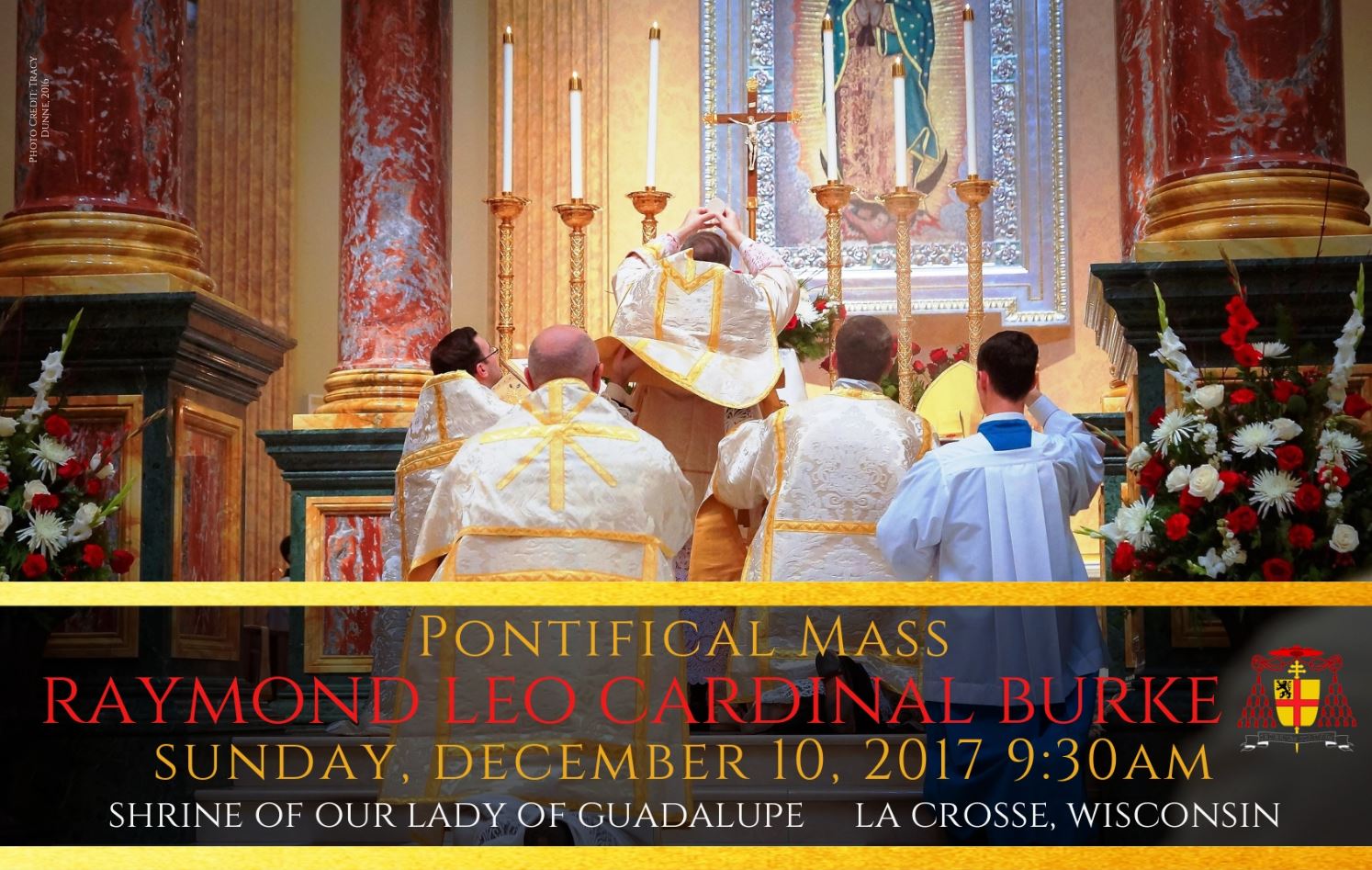
Shrine or Our Lady of Guadalupe, 5250 Justin Rd. La Crosse, Wisconsin. (877) 799-4059. www.guadalupeshrine.org
Cardinal Burke to Celebrate TLM in La Crosse (December 10, 2017)
By: Remnant Press ReleaseNew from RTV...


From Catholic Family News Editor, Matt Gaspers:
Fatima and the Post-Vatican II Church: Where Do We Go from Here?
Just two weeks after returning home from the Angelus Press Conference in Kansas City, I made my way to Weirton, West Virginia, a city of around 20,000 people located in the northern tip of the state, for what proved to be another exceptional “rendezvous with serious Catholics,” as the Catholic Identity Conference (Oct. 27-29, 2017) was so appropriately advertised. The Remnant editor Michael Matt, who helps organize the conference each year and serves as emcee throughout the weekend, graciously invited me to attend and represent Catholic Family News in place of our dearly departed friend, John Vennari (requiescat in pace), to whom Michael paid heartfelt tribute during the conference (many thanks, as well, to Eric Frankovitch, Director of the Catholic Identity Project, for his annual organizing efforts and hospitality).
This annual rendezvous of serious Catholics in a “Holiday Inn catacomb,” as Michael jokingly characterized it, is unique among Traditionalist conferences in that it seeks to gather in one venue as many representatives as possible of the “loose federation of warring tribes” (as John Vennari used to say) which constitutes the worldwide Traditional Catholic movement. This year’s conference certainly accomplished that goal, hosting under one roof an impressive assembly: two bishops, one Roman and one Eastern rite; priests from the Society of St. Pius X (SSPX), Priestly Fraternity of St. Peter (FSSP), and Institute of Christ the King Sovereign Priest (ICRSS), as well as diocesan clergy and several religious sisters; and, of course, a large crowd of lay faithful, including a significant number of young people.
No Rose-Colored Glasses
Hosting such a broad spectrum of speakers and attendees is indeed a bold initiative, one that some mistakenly interpret as “Trad Ecumenism.” Michael Matt, however, clearly articulated that such is not the case during his welcoming address on Friday evening. He strongly emphasized that:
“this Catholic Identity Conference is not about some phony ecumenical effort among Traditionalists, where, at the end of the weekend, we’re all going to have a big group hug and say, ‘Oh, you know, nothing matters. The most important thing is unity,’ and we can just go on from there. That’s not what this is about. That’s not what the Catholic Identity Conference is. Our beloved Church, in her human element, is suffering through the worst crisis in history and, tonight, we are going to begin a three-day process to discuss how we are going to survive this crisis. … The organizers of this conference are aware of the strategic differences that have come between us – all of us – and various groups of priests, in particular, over the past 25 years…and those differences are not insignificant. We are not up here pretending that we can sweep them all under the rug in one fell swoop. But we all face this dilemma, this dilemma of what to do when rightful ecclesial authority becomes disoriented, as ours most certainly has.”[1]
Such was the true nature and intent of the conference, as evidenced by the content of the excellent talks, some of which we shall now survey.
On the Unchanging Truth of the Catholic Faith
Mr. Matt’s welcoming address also served as an introduction for His Excellency Athanasius Schneider, O.R.C., auxiliary bishop of Astana, Kazakhstan, who presented the first lecture of the weekend. Bishop Schneider, a humble but firm critic of Amoris Laetitia[2] known for his defense of the four Cardinals’ famous dubia,[3]addressed the conference – “this clandestine Church,” he said with endearment – on what he described as “the crisis of the Faith in the world today.” His talk, entitled “On the Unchanging Truth of the Catholic Faith,” began by focusing on how the current crisis is fundamentally different than previous doctrinal crises in the sense that past errors typically opposed a single truth of the Faith. Arianism, for example, specifically denied the divinity of Christ. In our times, however, there is a universal attack on revealed truth, in general, and even on reason itself.
The remedy for this crisis, he explained, is to remain firmly rooted in the perennial Magisterium of the Church, particularly as enunciated during the roughly 100 years prior to the Second Vatican Council. He went on to quote at length from three magisterial documents of that time period: (1) Vatican I’s Dogmatic Constitution Dei Filius (On the Catholic Faith, 1870), (2) Pope St. Pius X’s inaugural encyclical E Supremi (On the Restoration of All Things in Christ, 1903), and (3) Pope Pius XII’s inaugural encyclical Summi Pontificatus (On the Unity of Human Society, 1939).
Vatican I’s Dei Filius, of course, contains this crucial passage:
“Therefore, let there be growth and abundant progress in understanding, knowledge, and wisdom, in each and all, in individuals and in the whole Church, at all times and in the progress of ages, but only within the proper limits, in the same dogma, the same sense and the same judgment [eodem sensu eademque sententia].”[4]
In other words, truth is immutable; our understanding of it can and should grow, but this growth never involves an “evolution” or “mutation” of dogma into something contrary to that which the Church has already defined. Bishop Schneider emphasized this point by quoting Dei Filius (his rendering):
“For the doctrine of the Faith which God has revealed is put forward, not as some philosophical discovery capable of being perfected by human intelligence, but as a divine deposit committed to the spouse of Christ to be faithfully protected and infallibly promulgated. Hence, that meaning of the sacred dogmas is ever to be maintained which has once been declared by Holy Mother Church, and there must never be any abandonment of this sense under the pretext of a more profound understanding.”[5]
The false notion of truth “evolving” into something different is the essence of Modernism, the “synthesis of all heresies,”[6] which itself evolved from the errors of naturalism and rationalism condemned by Vatican I. Pope St. Pius X spent a majority of his pontificate battling the Modernist heresy, which by his time had seeped into the clerical ranks. The underlying cause of Modernism is a rejection of the supremacy of God and His revealed truth. As St. Pius X declared and Bishop Schneider quoted:
“Such, in truth, is the audacity and the wrath employed everywhere in persecuting religion, in combating the dogmas of the faith, in brazen effort to uproot and destroy all relations between man and God!”[7]
Pius XII, in turn, addressed many of the same themes in Summi Pontificatus, as cited by Bishop Schneider:
“The present age, Venerable Brethren, by adding new errors to the doctrinal aberrations of the past, has pushed these to extremes which lead inevitably to a drift towards chaos. Before all else, it is certain that the radical and ultimate cause of the evils which We deplore in modern society is the denial and rejection of a universal norm of morality as well for individual and social life as for international relations; We mean the disregard, so common nowadays, and the forgetfulness of the natural law itself, which has its foundation in God, Almighty Creator and Father of all, supreme and absolute Lawgiver, all-wise and just Judge of human actions.”[8]
Several times, His Excellency emphasized how timely the magisterial statements he quoted truly are for the present day, as are “some striking affirmations” of Archbishop Fulton Sheen “which confirm perfectly the prophetic voice of the supreme Magisterium.” He was referring to a radio sermon delivered in 1947 by then- Monsignor Sheen entitled “Signs of Our Times.” In that sermon, the future archbishop spoke in detail about the devil, the anti-Christ, and the counter-Church which the devil will establish as “a mystical body of the anti-Christ that will in all externals resemble the Mystical Body of Christ.”[9] Interestingly, it was during this portion of his lecture that Bishop Schneider referred to Amoris Laetitia, a “wrong interpretation” of which he said “leads to this consequence, ultimately, to say good is evil and evil is good.”
Bishop Schneider concluded his talk by exhorting all present, in the words of St. Pius X (whom he said deserves to be called “the Great”), to remain always vigilant against the wiles of the devil and to speak out against his false prophets “who call evil good and good evil.”
100 Years Since Fatima; 50 Years of The Remnant
In addition to uniting the “warring tribes” of Traditionalists, the Catholic Identity Conference also seeks to foster, as its name implies, a strong Catholic identity. For younger attendees, in particular, this requires a review of our roots, as it is written: “Remember the days of old, think upon every generation: ask thy father, and he will declare to thee: thy elders and they will tell thee” (Deut. 32:7). This was the theme of Michael Matt’s talk, “100 Years Since Fatima; 50 Years of The Remnant,” during which he recounted for us the history of the Traditionalist movement and his family’s involvement therein.
He began by describing some of the fathers of the Traditionalist movement, men like Michael Davies, Hamish Fraser, William Marra, Walter Matt, and Archbishop Marcel Lefebvre. “These men,” he stressed, “were not about liturgical preferences. They were not about fighting for the Mass they like. It was about so much more than that.” For these brave men, it was all about holding fast to Tradition, not to their personal opinions. As Michael summed up, “They were in it to win it, and they were in it for the right reasons.”
After detailing a bit about the rift in the Matt family caused by Vatican II – specifically, between his father, Walter Matt, and uncle, Alphonse Matt (Walter’s brother) – Michael mentioned Dietrich von Hildebrand, a staunch opponent of the New Mass and other post-conciliar novelties. He quoted Dr. von Hildebrand’s position as expressed in a 1970 letter to Alphonse Matt, then-editor of The Wanderer:
“You assume that the new ordo missae and especially the rubrics constitute for me merely a personally painful change by replacing something very beautiful and perfect with something less beautiful and less perfect. But unfortunately, it is my conviction that the new ordo missae is the greatest pastoral mistake and that its consequences for the Church may be disastrous.
I agree, however, completely with you that it is a grave problem, whether one should criticize it publicly or only intra muros [“within the walls”]. Concerning this problem every one must follow his conscience. But I frankly cannot understand that you do not only abstain from a public criticism of the new ordo missae but make the ‘Wanderer’ an instrument for propagating and praising the new ordo.”[10]
Thus wrote the man whom Pius XII called “the 20th century doctor of the Church,” much to the chagrin of certain “conservative” (Vatican II-friendly) Catholics.
Turning his attention to some practical takeaways from the history he shared, Michael emphasized the importance of families being animated by a spirit of crusade. In other words, it is not enough for parents to simply take their children to the traditional Latin Mass on Sundays and allow the world to influence them the rest of the week. No, we must constantly fight to protect our kids from the world’s contagion on all fronts and make our homes domestic churches in which Christ the King lives and reigns. This is the only way our children will keep the Faith.
In closing, Michael made an impassioned appeal for all Traditionalists to defend the true Mass while also reaching out with humility and charity to Tradition-minded Novus Ordo Catholics, especially priests. If they are open to Tradition and heading in our direction, we should be welcoming them, not condemning them. I sincerely hope this appeal was taken to heart and will be put into practice.
Read the rest at CFN HERE
REMNANT COMMENT: You can watch the entire conference right now via on-demand video! Click HERE to purchase your ticket.
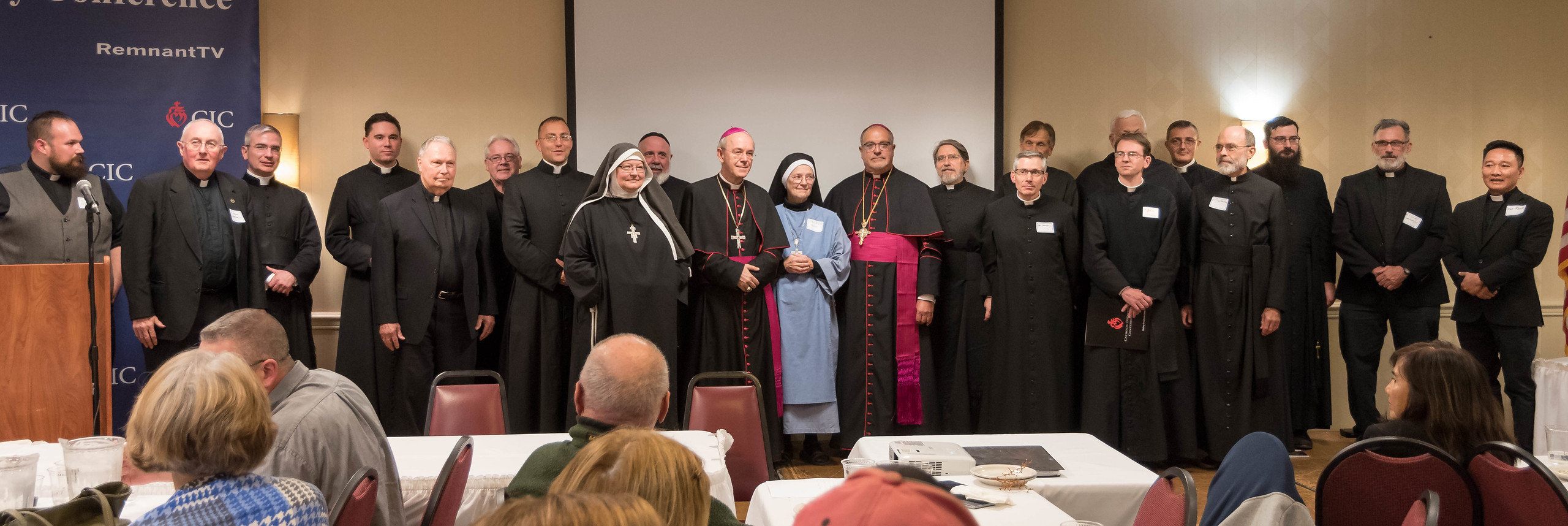
This novena is called the St. Andrew novena because it is begun on the feast of St. Andrew, on November 30. It is also referred to as the Christmas Anticipation Novena since it is intended to assist us in meditating on the true meaning of Christmas. This novena is meant to be prayed from November 30th to December 24th. (See end of article for the prayers)
St. Andrew was a native of Bethsaida in Galilee, a fisherman by trade, and a former disciple of John the Baptist. He introduced his brother, Simon Peter, to Jesus, saying, "We have found the Messiah." Overshadowed henceforth by his brother, Andrew nevertheless appears again in the Gospels introducing souls to Christ. After Pentecost, Andrew took up the apostolate on a much wider scale, and is said to have been martyred at Patras in southern Greece on a cross which was in the form of an "X". This type of cross has long been known as "St. Andrew's cross."
When Andrew was led to the place of martyrdom, on beholding the cross from a distance he cried out: "O good Cross, so long desired and now set up for my longing soul, I, confident and rejoicing, come to you; exultingly receive me, a disciple of Him who hung on you." Forthwith he was nailed to the cross. For two days he hung there alive, unceasingly proclaiming the doctrine of Christ until he passed on to Him whose likeness in death he had so vehemently desired.
Patron of: Achaia; Amalfi, Italy; Anglers; Burgundy; diocese of Constantinople; fish mongers; fishermen; those with gout; Greece; Germany; maidens; old maids; Patras, Greece; Russia; Scotland; singers; sore throats; University of Patras; women who wish to become mothers.
Symbols: Fish; Saint Andrew's cross; Cross saltire (X-shaped); V or Y shaped cross; two fishes; tall cross and book; vertical spear; primitive fish hook; fisherman's net.
Often Portrayed As: Man bound to a cross; man preaching from a cross; preacher holding fish.
Things to Do:
Today's feast traditionally marks the end of the Church year and beginning of Advent. Advent always begins on the Sunday closest to November 30, with this day being the last possible day of the old Liturgical Year. Christmas is right around the corner. An old saying reflected this:
St. Andrew the King
Three weeks and three days
before Christmas begins.
Because weddings were not allowed during Advent and Christmas and Andrew is the patron of unmarried maidens, many countries have marriage-related superstitions connected to this day. See Patron Saints Index for a few traditions.
- Beginning today the Christmas Anticipatory Prayer, also known as the "Novena to St. Andrew" (Hail and Blessed be the hour...) is prayed every day until Christmas.
- View some of the art depictions: Gallery of Images of Andrew.
- Remember to pray for fishermen and all who make their livelihood by the sea.
- Andrew is the patron saint of Scotland, Russia, and Romania. The flag of Scotland (and the Union Flag and the arms and Flag of Nova Scotia) feature a saltire (X-shaped cross) in commemoration of the shape of St. Andrew's cross.
- Read more about St. Andrew from Butler's Lives of the Saints. Also read about Andrew from The Golden Legend.
Foods connected with this feast: St. Andrew was a fisherman, so fish dishes and biblical themes would reign supreme. Women for Faith and Family have reprinted Evelyn Vitz's suggested "Biblical Dinner" menu. But there are other foods connected with this day:
- Scotland: St. Andrew is the patron of Scotland. Scones, haggis, sheepshead and fish dishes are traditional. The scones are called "wigs", although their shape is rectangular.
- England: St Andrew is a patron of lace-makers. On his feast, sometimes known as "Tander", areas such as Bedfordshire, Buckinghamshire, Hertfordshire and Northamptonshire celebrate by feasting, drinking elderberry wine, sports and serving a special cake called the Tandra Cake, particularly in Bedfordshire. It has a bread dough base to which lard, sugar, currants, lemon peel and eggs are added. This is also a day for squirrel hunting in England, so Brunswick Stew would be another dish on the table in England.
- Slovakian Countries: Halushky (pasta dish) is cooked. Unmarried girls place slips of paper with names of single young men into the dish.
St. Andrew’s Novena Prayer:
Hail, and blessed be the hour and moment at which the Son of God was born of a most pure Virgin at a stable at midnight in Bethlehem in the piercing cold. At that hour vouchsafe, I beseech Thee, to hear my prayers and grant my desires.
(Mention your intentions here)
Through Jesus Christ and His most Blessed Mother.
Amen.
Traditionally, this prayer is prayed 15 times each day for the duration of the Novena.
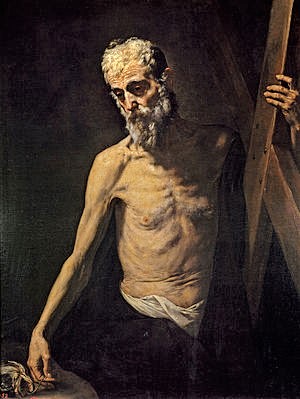 St. Andrew, pray for us!
St. Andrew, pray for us!
The following is a slightly adapted version of the talk given by Chorbishop Spinosa at the Catholic Identity Conference 2017
Today’s world speaks of three monotheistic religions: Christianity, Judaism, and Islam. We hear it in the secular news and in religious discussions as well. My question is: “Are they true religions?”
True or False: There are Three Great Monotheistic Religions in the World Today Featured
By: Chorbishop Anthony SpinosaThe Last Word…
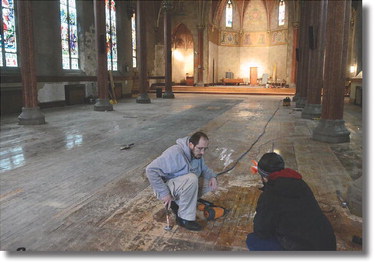 Holy Trinity Roman Catholic Church, in Syracuse, NY, desecrated while transformed into a mosque. (Well played, Vatican II)
Holy Trinity Roman Catholic Church, in Syracuse, NY, desecrated while transformed into a mosque. (Well played, Vatican II)
A few weeks ago America experienced a horrific mass shooting at a music concert by a radical Islamist; a few days ago we suffered through another horrific shooting, this time at a Baptist church by an avowed atheist. Both were acts of terrorism and both should be categorized as hate crimes; but they will not be, because Moslems and Atheists are both protected species whereas country music rednecks and main stream Christians count for little or nothing in the estimation of this diabolically disoriented world.

In the wake of the movie mogul Harvey Weinstein sex scandal, Hollywood's dark and nasty underbelly is finally beginning to show. From down in the catacombs Michael Matt talks pop culture, pointing out how early Traditional Catholics were just as concerned about the rock 'n' roll and Hollywood-driven Sexual Revolution as they were the liturgical revolution of Vatican II. Pope Pius XI issued an encyclical warning against the motion picture industry way back in 1939. Were Catholics of the past just paranoid, or have post-Vatican II Catholics of today simply lost the ability to recognize evil when we see it? Now we have prominent cardinals in Rome eulogizing gender-benders such as David Bowie, while Neo-Catholics hope and pray that AC/I DC guitarist Malcolm Young is now "playing before the throne of God."







